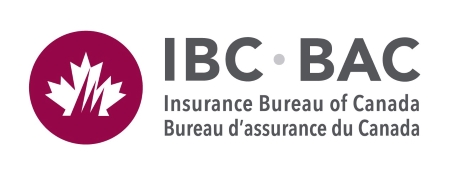TORONTO, Dec. 10, 2019 /CNW/ - The storm that hit Eastern Canada between October 30 and November 1, caused over $250 million in insured damage, according to Catastrophe Indices and Quantification Inc. (CatIQ).*
Province |
Insured Damage |
Ontario |
$55 million |
Quebec |
$189 million |
New Brunswick |
$3 million |
Nova Scotia |
$2 million |
Prince Edward Island |
$150,000 |
Newfoundland & Labrador |
$480,000 |
TOTAL |
$250 million |
Significant rainfall and damaging winds hit much of Eastern Canada causing power outages and leaving nearly one million Hydro-Québec customers without power. The Niagara and Montreal areas were the hardest hit, both in terms of wind and water damage.
Rain, snow and high winds in Ontario brought over 60 mm of rain to Cornwall and 17 cm of snow to Sudbury.
Heavy precipitation was widespread across southern Quebec. The most rainfall occurred in the Eastern Townships: Stratford received 109 mm and Sherbrooke 93 mm. Montreal and Laval both recorded 63 mm, and Quebec City received 71 mm. Val-d'Or and Chibougamau recorded 19 and 30 cm of snow, respectively.
Newfoundland and Labrador (NL) also received heavy amounts of precipitation. The highest amount recorded in the province was 82 mm in Cow Head. Goose Bay, Labrador, recorded 24 cm of snow.
Damaging wind gusts exceeded 100 km/h in multiple locations along the shores of eastern Lake Erie and eastern Lake Ontario, causing high waves and storm surges. In Port Colborne, a 129 km/h wind gust was recorded. Strong winds affected southern Quebec: Montreal and Trois-Rivières recorded winds gusts of 105 km/h and 104 km/h, respectively. In Atlantic Canada, gusts of 107 km/h and 100 km/h were felt in Wreckhouse and St. John's, NL, respectively. Halifax Stanfield International Airport recorded a maximum gust of 102 km/h and Charlottetown recorded 91 km/h. The strong winds downed trees, damaged roofs and siding, and led to road closures and power outages.
As the financial cost of severe weather rises, Insurance Bureau of Canada (IBC) is advocating that all orders of government increase their investments in mitigating the impact of extreme weather and building resilience against its damaging effects. This includes investing in upgraded infrastructure to protect communities from floods and fires, improved building codes, better land-use planning, and incentives to shift the development of homes and businesses away from areas at highest risk of flooding.
IBC reminds Canadians that it is not only insurers that foot the bill for severe weather damage, but also taxpayers. That's why all stakeholders should come together to reduce the financial strain caused by flood events. For every dollar paid out in insurance claims for damaged homes and businesses, Canadian governments and their taxpayers pay out much more to repair public infrastructure damaged by severe weather.
Visit IBC's website for information on how to prepare for a disaster and ways to prevent flood damage to your home.
*CatIQ estimated the amount of insured damage under licence to IBC. For more information on CatIQ, visit www.catiq.com.
Quotes
"Severe weather events driven by climate change are happening more regularly and with greater strength. In particular, heavy rainstorms that cause flooding are becoming more common. While the insured damage from these storms is significant, the total economic cost to homeowners and governments is even greater. It is important that property owners take precautions to minimize potential damage. They should also understand their insurance policies and know what type of flooding and water damage their policies cover."
– Kim Donaldson, Vice-President, Ontario, IBC
"As a society, we have to adapt to this changing climate that's resulting in an increase of extreme weather events. Better building codes, increased risk awareness and infrastructure improvements are all needed to make our communities more resilient. Homeowners will also benefit from a better knowledge of what they can do in and around their homes to protect against the wrath of Mother Nature."
– Pierre Babinsky, Director of Communications and Public Affairs, Quebec, IBC
"With climate change, we're seeing extreme storms that involve floods and severe wind more frequently, and they are hitting with greater intensity. The insured damage from these storms is just part of the equation; the economic cost to homeowners and governments also needs to be factored into the total cost to society, not to mention the disruption to people's lives and the emotional cost of seeing personal property destroyed. Consumers need to take precautions and secure their property to minimize potential damage.
– Amanda Dean, Vice-President, Atlantic, IBC
About Insurance Bureau of Canada
Insurance Bureau of Canada (IBC) is the national industry association representing Canada's private home, auto and business insurers. Its member companies make up 90% of the property and casualty (P&C) insurance market in Canada. For more than 50 years, IBC has worked with governments across the country to help make affordable home, auto and business insurance available for all Canadians. IBC supports the vision of consumers and governments trusting, valuing and supporting the private P&C insurance industry. It champions key issues and helps educate consumers on how best to protect their homes, cars, businesses and properties.
P&C insurance touches the lives of nearly every Canadian and plays a critical role in keeping businesses safe and the Canadian economy strong. It employs more than 126,000 Canadians, pays $9 billion in taxes and has a total premium base of $54.7 billion.
If you have a question about home, auto or business insurance, contact IBC's Consumer Information Centre at 1-844-2ask-IBC.
For media releases and more information, visit IBC's Media Centre at www.ibc.ca. Follow us on Twitter @InsuranceBureau and Facebook Insurance Bureau.
SOURCE Insurance Bureau of Canada

Media contacts: Vanessa Barrasa 416-550-9062 [email protected]; Québec: Pauline Triplet 514 288-1563, poste 2277 [email protected]

Share this article